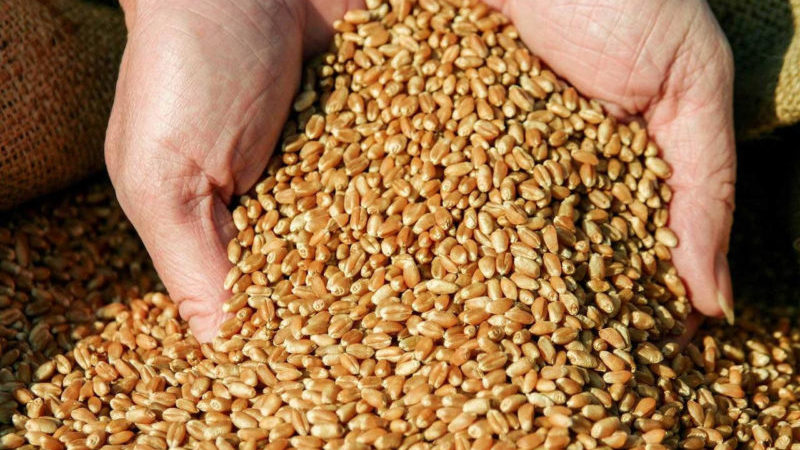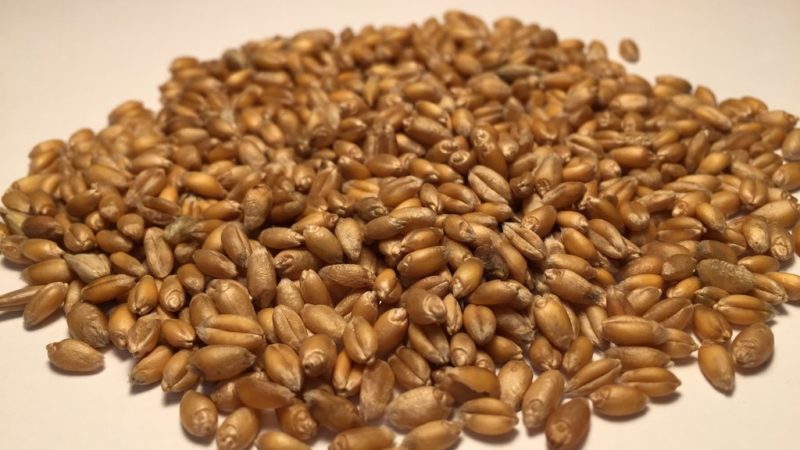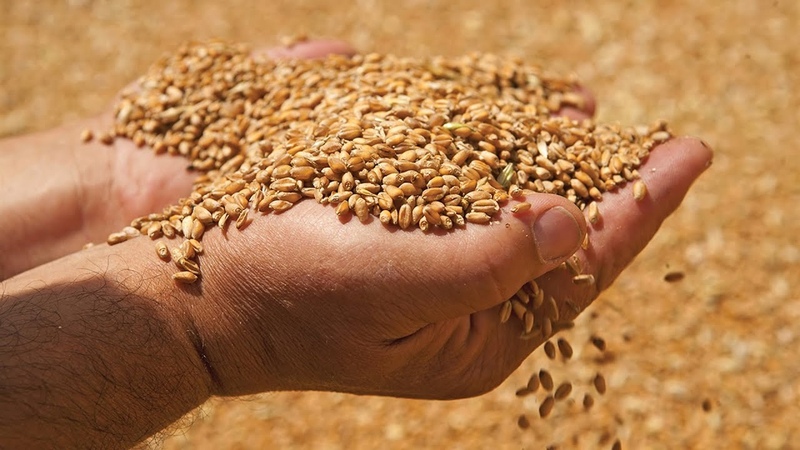What is feed wheat and where is it used
The development of the livestock industry increases the need for livestock feed. According to statistics, about half of the annual grain harvest is spent on these needs. Wheat accounts for about 20 million tons. Feed grain is used exclusively for feeding livestock.
The content of the article
What is feed wheat
Feed wheat is low quality wheat intended for feeding livestock... This is grain that did not pass quality control, which is why it did not enter the food market. Such wheat is suitable for agricultural applications.

Differences from food
Feed grains are obtained from all types of cereals. General symptom: it cannot be used to feed people. But the chemical composition of the forage is suitable for animals. It has a reduced amount of protein and fiber, and more carbohydrates than food.
Wheat is classified into 6 classes. Grain of 5 and 6 classes belongs to fodder. It is used for livestock feed. Grades 1-4 are used to feed people.
Appointment
Feed grains are used to feed sheep, pigs, cows, rabbits, chickens, geese, ducks and other animals and birds.
Fodder wheat and feed wheat are the same or not
Fodder - wheat of 5 and 6 classes. These are non-food types that are used only as animal feed.
I.e feed and feed wheat are essentially the same thing.
Description and characteristics
Feed wheat contains less fat, protein and fiber when compared to food wheat. But it has a high concentration of carbohydrates.
The norms that the cereal must meet:
- maximum humidity level - 12%;
- the amount of grain impurities - up to 15%;
- the presence of vitamins B and E;
- protein content - 10-16%.
Due to the relatively high cellulose content, durum feed wheat is fed to horses and cattle. Other varieties are used for poultry, pigs, fish.

Features:
Fodder wheat is also used for the manufacture of combined feed. A sufficient concentration of lysine in high-quality compound feed ensures complete assimilation of feed by animals. This is due to the equal ratio of phosphorus and amino acids.
Using combined feed based on wheat of the 5th and 6th classes, farmers achieve the earliest possible weight gain in young individuals and an improvement in the taste of meat.
But if feed wheat is used as the sole source of food, it can harm animals. The reasons:
- excess carbohydrates - with an insufficient amount of fiber and protein, this leads to obesity;
- high starch content - because of this, cattle have problems with the digestive tract.
To compensate for the shortcomings, it is recommended to give animals corn, barley, vegetables, hay, millet, oats, and fresh grass together with wheat.
Requirements for feed wheat according to GOST
The requirements are regulated by GOST R 54078-2010. It states that feed grain should not be contaminated with bacteria and fungi that are dangerous to human and animal health, and should not have foreign odors. The norms determine the appearance, transparency, gloss, shape, color.
Basic GOST requirements:
- trash admixture - up to 5%;
- mineral impurities - up to 1%;
- grain impurities - up to 15%;
- normal wheat color and healthy condition;
- fresh smell - there should be no shades of mold, mustiness, malt and rot;
- the content of grain affected by fusarium - no more than 1%;
- the amount of dry matter - from 87%;
- smut fungus - up to 8%.
According to GOST, grain husks, stems and leaves, stones, pieces of soil, weed seeds, other cereals and legumes, spoiled grain, weeds are considered a trash admixture.
The norms for grain impurities are also prescribed. Grain is considered such an impurity:
- crushed;
- broken and eaten, the maximum proportion of the total mass is 50%;
- sprouted;
- wrinkled;
- deformed;
- immature.
Grain classification

When determining the quality of grain, first of all, attention is paid to its condition - the amount of crude fiber, crude protein, dry matter, carbohydrates, etc. Also, the classification is carried out based on the indicators of moisture, protein content, gluten, the amount of impurities and the degree of pest damage.
- 1st and 2nd grade - the highest quality grain, which is used for cooking and improving the quality of lower grades during baking;
- Grade 3 also highly valued, when used in the food industry, they do not resort to improving it;
- 4th grade used for making pasta and baking bread, but after being improved by grade 1 or 2;
- 5 and 6 grades- feed wheat.
Growing features
Specifically feed wheat is not growas it is not suitable for sowing.
Coarse grains are taken from something that is not suitable for use in the food industry.
Harvest storage
The main factor that determines the duration of grain storage is the level of moisture. Wheat is placed in storage facilities where the moisture content does not exceed 12%.
If this indicator is observed, biochemical processes stop, and the forage does not deteriorate for 5-7 years. At humidity above 12%, they actively reproduce pests and heat is generated.
Attention! The maximum storage temperature is + 10 ° C.
How to choose the right one
Documents are requested for each delivered batch. For large volumes (for example, on farms), samples taken from several random bags are sent for laboratory testing.
The quality certificates prescribe the test results, which indicate the presence / absence of dangerous microorganisms. Everything must comply with GOST. If there are violations, the batch is returned to the supplier.
The cost of products is formed from the following indicators:
- varietal group;
- filling the market - depends on the amount of the last harvest;
- type of grain;
- demand for a product in a particular region.
Advantages and Disadvantages of Feed Wheat
Disadvantages of coarse grains:
- increased amount of starch;
- lack of protein, fiber and fat;
- high carbohydrate content.
An excessive amount of carbohydrates leads to imbalance and creates a threat of obesity. And due to the lack of fiber, the food is poorly absorbed by the body. Therefore, feed wheat is not used as the only feed.
But such grain is suitable as an additive to combined feed. In combination with other crops, forage allows young animals to gain weight quickly. Lysine is included in compound feed to stabilize amino acid metabolism.
Conclusion
Feed wheat is a feed grain, the basis of animal nutrition. At the time of purchase, its quality is controlled - checked for compliance with standards so as not to harm livestock. For maximum benefits, wheat is combined with other types of feed.